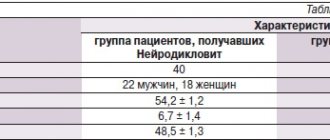Instructions for use of OMEZ DSR
The use of domperidone is associated with prolongation of the QT interval on the ECG. During post-marketing surveillance, there have been very rare reports of QT prolongation in patients taking domperidone. These cases included patients with mixed risk factors, electrolyte imbalances, and concomitant medications that were possible contributing factors.
Epidemiological studies have shown that the use of domperidone is associated with an increased risk of ventricular arrhythmias and sudden cardiac death. A higher risk was observed in patients over 60 years of age taking more than 30 mg of domperidone daily, concomitantly taking other drugs with a known risk factor for QT prolongation, or strong CYP3A4 inhibitors.
Domperidone should be taken at the minimum effective dose. Domperidone is contraindicated in patients with known prolongation of cardiac conduction intervals, particularly QT, with significant electrolyte imbalances (hypokalemia, hyperkalemia, hypomagnesemia) or bradycardia, in patients with cardiac disease such as congestive heart failure, due to the increased risk of developing ventricular arrhythmias. Electrolyte imbalances (hypokalemia, hyperkalemia, hypomagnesemia), bradycardia, are factors that increase proarrhythmic risk.
Treatment with domperidone should be discontinued if the patient experiences signs or symptoms that may be associated with cardiac arrhythmia. The patient should consult a doctor.
The patient should be advised to immediately notify the doctor of the development of any cardiovascular symptoms.
Omez DSR should not be used in patients with moderate to severe impairment of liver function, abnormal electrical activity of the heart and arrhythmias, as well as in patients with an increased risk of developing these disorders. Omez DSR should not be used simultaneously with other drugs that have a similar effect on cardiac conduction, as well as with drugs that reduce its metabolism.
If a gastric ulcer is suspected, the possibility of malignancy should be excluded before starting treatment with omeprazole, because Taking the drug will weaken the severity of the symptoms of the disease and complicate the diagnosis.
A decrease in the acidity of gastric juice leads to an increase in the microflora normally present in the gastrointestinal tract. Treatment with drugs that reduce acidity may lead to a slight increase in the risk of gastrointestinal infections caused by pathogenic microorganisms such as Salmonella, Campylobacter.
An increase in prolactin concentrations in the blood caused by domperidone sometimes leads to galactorrhea in women or gynecomastia in men.
Patients suffering from pheochromocytoma may develop a hypertensive crisis.
Impact on the ability to drive vehicles and operate machinery
The active components of the drug do not affect the ability to drive a car or operate machinery.
OMEZ DSR capsules with modified release 30 mg+20 mg No. 30
Pharmacokinetics of Omerprazole Omeprazole is sensitive to the acidic environment of the stomach and is therefore contained in acid-resistant pellets that dissolve only in the intestine. When taken orally, it is quickly absorbed from the gastrointestinal tract. The peak concentration of omeprazole in the blood plasma is reached within 0.5 - 3.5 hours. Communication with plasma proteins is about 95%. Omeprazole is metabolized in the liver. Metabolism is carried out through the cytochrome P450 system (isoform CYP2C19 - S-mephenytoin hydroxylase). The half-life is 0.5–1 hour. The concentration of omeprazole in plasma does not correlate with the degree and duration of suppression of hydrochloric acid secretion (t½ - 0.5-1 hour, and the antisecretory effect lasts up to 2-3 days). When taking 20-40 mg of omeprazole, bioavailability is about 40%. Food intake does not affect the bioavailability of the drug. Most of the drug is excreted by the kidneys in the form of metabolites. Domperidone is quickly and almost completely (93%) absorbed from the gastrointestinal tract, the maximum concentration of the drug (Cmax) in the blood plasma is reached after 30 - 60 minutes. The low absolute bioavailability of domperidone when taken orally (approximately 15%) is due to extensive first-pass metabolism in the intestinal wall and liver. Reduced acidity of gastric contents reduces the absorption of domperidone. Concomitant food intake significantly reduces the bioavailability of the drug. When taken orally, domperidone does not accumulate or induce its own metabolism. After oral administration of domperidone for 2 weeks at a dose of 30 mg/day, Cmax in blood plasma 90 minutes after the last dose is 21 ng/ml. The apparent volume of distribution of domperidone is 440 l or 5.7 l/kg. Approximately 93% bound to plasma proteins. The half-life from blood plasma is 7–9 hours. Domperidone is metabolized in the liver by hydroxylation and N-dealkylation. Excretion in urine and feces is 31% and 66% of the dose taken, respectively. It is excreted unchanged in feces and urine (1%). Pharmacodynamics Omeprazole is an antisecretory drug known as a proton pump inhibitor; it belongs to benzimidazole derivatives that inhibit the enzyme H+K+ATPase (proton pump) in the parietal cells of the stomach. By blocking the proton pump, omeprazole interferes with the process of acid formation at the level of the final stage of hydrochloric acid synthesis in the stomach. Omeprazole suppresses the secretion of hydrochloric acid in response to all known stimuli. Domperidone blocks peripheral dopamine receptors located in the walls of the stomach and duodenum. Domperidone belongs to the group of prokinetics or propulsants. Domperidone increases the tone of the lower esophageal sphincter (LES) while relaxing the pyloric sphincter, helps reduce intragastric pressure, facilitating gastric emptying and preventing gastroesophageal reflux. The drug increases the duration of peristaltic contractions of the antrum of the stomach and duodenum, accelerates gastric emptying if the evacuation of its contents is slow, and does not affect gastric secretion. The antiemetic effect is due to a combination of peripheral (gastrokinetic) action and antagonism to dopamine receptors in the chemoreceptor trigger zone. Domperidone slightly penetrates the blood-brain barrier. Domperidone stimulates the release of prolactin from the pituitary gland.
Doctors' opinions and patient reviews
Doctors note that Omez is safe for adults and children, has a positive effect on the general well-being of patients, and restores the functioning of the gastrointestinal tract. The drug can be used both for chronic diseases during exacerbations, and for the treatment of acute problems. This remedy is also suitable for protecting the stomach when taking aggressive medications. Patients are also happy to share their opinions about taking the medicine.
Alexander, Moscow: “I’ve been drinking Omez for 3 years now. First, the doctor prescribed it to treat an ulcer, and then to prevent a relapse. I also use it when taking medications that have a detrimental effect on the gastrointestinal tract.”
Olga, Yaroslavl: “I drink Omez to protect my stomach from the medications I take for my heart. So far so good, my stomach doesn’t hurt.”
Igor, Arkhangelsk: “I have been suffering from gastritis for a long time. Omez helps with all its manifestations: nausea, heartburn, pain, feeling of heaviness. The drug always works in a matter of seconds.”
Effects when taken
The capsules are swallowed with water. After taking the drug, the active substance omesaprozole is quickly absorbed into the blood after entering the stomach. The maximum amount of it in the blood is detected after about an hour. With one-time use, bioavailability is up to 40%; with continuous use, the figure increases to 60%.
It is important to understand why omez is prescribed in order to eliminate negative consequences from its improper use. The active agent, entering the body, provides rapid inhibition of the secretion of hydrochloric acid. At the same time, omez medicine, the instructions indicate this, begins to work most effectively after 4 days.
In addition, the drug omez has bactericidal properties, which makes it possible to successfully combat Helicobacter pylori bacteria. These harmful microorganisms provoke the development of gastritis and increase the risk of developing peptic ulcers. In the complex treatment of pathologies of the digestive organ in combination with antibacterial drugs omez, the instructions focus on this, allowing you to quickly eliminate unpleasant symptoms. In addition, when taking the drug, healing of the mucous membrane and long-term remission of peptic ulcer disease are guaranteed, which reduces the likelihood of complications such as bleeding.
Other effects associated with decreased hydrochloric acid production:
- With long-term use of the drug, the formation of benign glandular cysts in the stomach is possible, which resolve over time.
- The likelihood of intestinal infections, which can be caused by various harmful bacteria, increases.
Indications
The drug omez, the instructions for use emphasize this, is suitable for the treatment of adults and children. But at the same time, it must be prescribed by a doctor based on the results of the examination.
For adults, the drug is most often prescribed for the treatment and prevention of gastric and duodenal ulcers. Omez also has other indications for use, these are:
- Gastroesophageal reflux syndrome, characterized by inflammation of the lower walls of the esophagus.
- Various pathologies that provoke increased production of hydrochloric acid by the glands of the stomach.
- Pancreatitis, in which inflammatory processes develop in the pancreas,
The drug is prescribed to adults when taking non-steroidal anti-inflammatory drugs. They often lead to damage to the mucous membranes.
It is important to know what omez is used for in treating children. It is allowed to prescribe the medicine when the child reaches 2 years of age if his body weight is more than 20 kg. The drug is used to treat gastroesophageal reflux disease. Upon reaching 4 years of age, the drug is allowed to treat peptic ulcers caused by the bacterium Helicobacter pylori.
Contraindications for use
Situations, diseases and conditions in which taking Omez DSR is prohibited:
- individual intolerance to the drug;
- prolactinoma;
- lactose intolerance and other problems associated with its absorption or excretion;
- fructose intolerance, sucrose deficiency;
- taking CYP3A4 inhibitors;
- intestinal obstruction;
- perforation of the gastrointestinal tract;
- bleeding in the gastrointestinal tract;
- liver diseases;
- age under 18 years;
- During pregnancy and breastfeeding.
Situations and conditions in which you need to take the medicine with caution:
- ulcer or suspicion of it;
- recent gastrointestinal surgery;
- abnormal weight loss;
- vomiting, including blood;
- bloody stool;
- problems with swallowing;
- other alarming symptoms from the gastrointestinal tract;
- osteoporosis;
- heart diseases;
- signs of electrolyte imbalance.
Conditions and situations in which oral administration of Omez is prohibited:
- intolerance to the active substance;
- taking nelfinavir;
- age up to 2 years;
- body weight less than 20 kg;
- age up to 4 years (for the treatment of gastrointestinal diseases due to Helicobacter pylori infection).
Contraindications to intravenous administration of Omez:
- age under 18 years;
- intolerance to the active component;
- taking nelfinavir.
If no improvement is observed within 5 days after starting the medication or the condition worsens, you should stop taking the medication and consult a doctor. What other signs indicate the need to urgently consult a doctor:
- rapid weight loss;
- loss of appetite;
- pain in the abdomen and (or) chest;
- decreased performance;
- vomit;
- difficulty swallowing;
- blood in vomit or stool;
- heartburn for 3 months or longer;
- cough;
- breathing problems;
- yellowing of the skin.
People with liver and kidney diseases, a family history of cancer, and patients over 45 years of age should take the medicine with extreme caution.
The material in the article is advisory in nature. For an accurate diagnosis and prescription, you need to consult a doctor.


